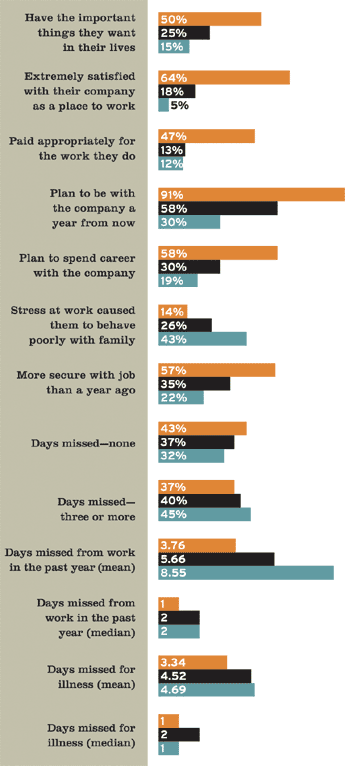What Your Disaffected Workers Cost
We all know they're out there. Our new survey finds the price tag.
GMJ’s first national survey found that, of all U.S. workers 18 or older, 24.7 million, or 19%, are what we call actively disengaged. This term describes people who not only fail to be enthralled by their work but are fundamentally disconnected from it. Actively disengaged workers tend to be less productive and report being less loyal to their companies, more stressed and less secure in their work. They miss more days and are less satisfied with their personal lives.
Like death and taxes, these workers will always be with us. But their numbers can be reduced, and great benefits will result from making even small inroads into the problem. Using two approaches, we estimate that the lower productivity of actively disengaged workers penalizes U.S. economic performance by about $300 billion, or a figure nearly equal to the nation’s defense budget.
When compared with all other workers, this cost reflects the fact that actively disengaged workers report more days of work missed (3.5 more days per person per year) and more days of work missed for illness (0.55 days per person). Thus the 24.7 million actively disengaged employees miss 86.5 million more work days than average workers and 13.6 million more days because of illness. When actively disengaged workers are compared with engaged employees, the data are even more striking: 118.3 million days of work missed and 33.3 million days missed for illness. These numbers do not include the effect on turnover, safety or health-care costs.
We calculate that with all other macroeconomic factors staying constant, a five-percentage-point decrease in the percentage of actively disengaged employees would boost U.S. productivity by $79 billion a year.
|
|
 |
| Results of this survey are based on a nationally representative sample of 1,000 employed adults aged 18 and older. Interviewing conducted by telephone during Oct. 2000 by The 优蜜传媒Organization. For results based on samples of this size, one can say with 95% confidence that the error attributable to sampling and other random effects could be plus or minus three percentage points. For findings based on sub-groups, the sampling error would be greater. |
|

